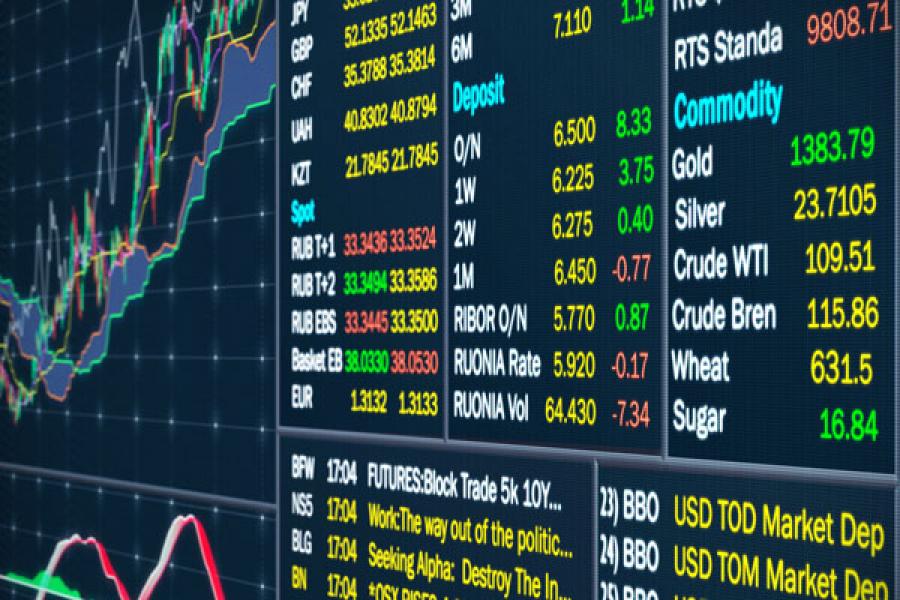
The risks of fast news analytics and institutional trading
High frequency news analytics services give institutional traders an edge by speeding up reaction times to new information. But this efficiency comes at a price.
Institutional traders in financial markets are increasingly sourcing information from ‘sentiment’ indicators; analytics created by computer algorithms from real-time content published by Dow Jones Newswires, Bloomberg, Thomson Reuters and other wire services. These indicators can tell traders within milliseconds whether an article is positive or negative and whether it contains relevant information affecting a firm’s value.
While this “meta-information” can provide a competitive advantage to its users (mainly high frequency and algorithmic traders like hedge funds), low-latency signals can lead to unintended consequences when algorithms automatically initiate trades based on inaccurate information.
A case in point occurred in April 2013 when an incorrect twitter feed about a White House explosion caused a mini flash crash in US markets. Some quickly blamed algorithmic trading for the reaction, while others argued that human traders were mainly responsible. In any case, it is commonly accepted that news reading algorithms are more likely to misinterpret news than human traders.
Given that a growth in computer trading is accelerating the process of accessing such information and increasing the speed at which it is incorporated into stock prices, understanding the magnitude of the price effects associated with such meta information is critical for policymakers concerned about financial market stability.
Media, institutional traders, and stock prices
While much has been written about the effects of information from traditional media sources on stock prices and the market’s reaction to news analytics, what has yet to be demonstrated is the influence of this meta information.
In a new working paper, we have been able to identify the causal effect of meta information by exploiting the differences in the high frequency signals derived from Dow Jones Newswires stories between older and newer versions of Ravenpack, a major news analytics provider.
To do this we looked at both Ravenpack’s initial and corrected analysis taken from the Dow Jones articles (the initial analysis being largely “written” by algorithms, while the corrected version is edited by a human). The signals derived by RavenPack from the DJ Newswire measure (a) the importance of the article to the firm that is the subject of the story (‘relevance’), and (b) whether the story conveyed positive or negative information about the firm (‘sentiment’). We classified articles in three ways: articles which held information of little relevance but were inaccurately noted by algorithms (and first released) as being of high relevance; conversely, relevant articles which were originally noted by algorithms as being of little value or relevance, but were later confirmed to be of high relevance; and finally those article which were accurately noted early on as containing highly relevant information.
The differences in stock market response between the ‘true’ and real-time versions of the news analytics enabled us to study the causal impact of meta information, revealing an effect on price, volume and liquidity.
Price
We noted that the speed of the stock price reaction was significantly lower for articles containing highly relevant information but initially noted as being of little relevance, than it was for articles accurately portrayed as being of high relevance.
We also found an over-reaction (triggered by algorithmic traders) to low relevance articles which were initially released as being of high relevance. Although in each case this was quickly corrected by human traders.
Volume
The study indicated that articles recognised early as being high relevance triggered a significantly greater ratio of trade volume for the stock in the first five seconds (compared to the two minute interval after release) compared to articles which were initially, but inaccurately, noted as being of low relevance. This is consistent with the theory that investors with a speed advantage trade very aggressively on signals that they can exploit before other traders.
Liquidity
Finally, we found that a stock’s liquidity measured during the five seconds after an article’s release is significantly lower for articles accurately portrayed as being of high relevance than for high-relevance articles originally released as low-relevance This suggests that while trading on news analytics improves the informational efficiency of stock prices, the fact that only a subset of market participants has access to news sentiments indicators increases information asymmetry in the market.
An important question, which is outside the scope of our study, is whether the ensuing increase in information efficiency is high enough to offset the accompanying reduction in liquidity.
Policy implications
News analytics are a major source of information for institutional investors who are responsible for the majority of the trading volume in the market. Our findings show that providers of these analytics have a significant impact on the market that is separate from the information contained in the news. These findings have normative implications in terms of the recent regulatory debate on high-speed delivery of information and the effects of algorithmic trading. They show that news analytics improve price efficiency, but at the cost of reducing liquidity and potentially distortionary price effects.
This has implications in terms of the recent regulatory debate on high-speed delivery of information and the effects of algorithmic trading.
[This article is republished courtesy of INSEAD Knowledge
http://knowledge.insead.edu, the portal to the latest business insights and views of The Business School of the World. Copyright INSEAD 2023]















